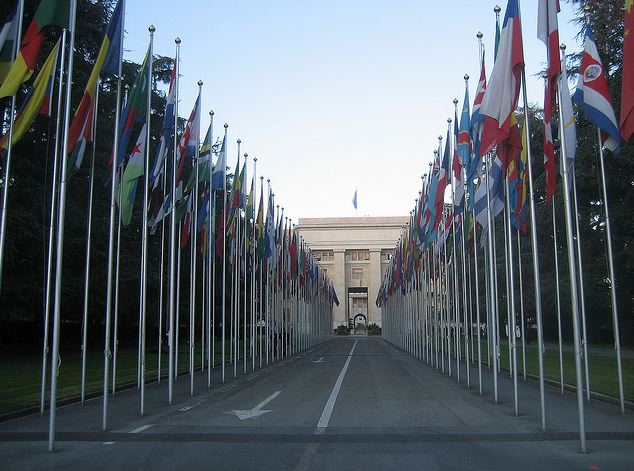Last week the United Nations Human Rights Council (UNHRC) issued a report calling access to the Internet a basic human right. Depending on their point of view, people responded to the announcement with either praise or scoffing.

United Nations in Geneva by cometstarmoon via Flickr
Earlier this year, Vinton Cerf published an op-ed piece in The New York Times saying, Internet Access Is Not a Human Right. He argued,
. . . technology is an enabler of rights, not a right itself. There is a high bar for something to be considered a human right.
The BBC ran an interview with Tim Berners-Lee in which he stated it’s “an empowering thing for humanity to be connected at high speed and without borders.” Berners-Lee is on record as considering Internet access a human right.
According to a Digital Spy article on the UNHRC report,
US ambassador Eileen Donahoe told reporters: “It’s the first ever U.N. resolution affirming that human rights in the digital realm must be protected and promoted to the same extent and with the same commitment as human rights in the physical world.”
Let’s Define The Terms
When Mashable reported on this story, many of the commenters there expressed the idea that Internet access was not a basic human right. Many of the comments did not deal with what seems to me to be the key question: Is it legal for a government to criminalize legimate expression if it’s online?
I think a definition of terms would be useful to this discussion. In particular, what exactly the UNHRC is talking about when it says “basic human rights.” Here’s how the UNHRC defines human rights:
Human rights are rights inherent to all human beings, whatever our nationality, place of residence, sex, national or ethnic origin, colour, religion, language, or any other status. We are all equally entitled to our human rights without discrimination. These rights are all interrelated, interdependent and indivisible.
Universal human rights are often expressed and guaranteed by law, in the forms of treaties, customary international law, general principles and other sources of international law. International human rights law lays down obligations of Governments to act in certain ways or to refrain from certain acts, in order to promote and protect human rights and fundamental freedoms of individuals or groups.
As you can see, their definition is not limited to things like food and shelter, but talks about the fundamental freedoms of individuals. Of special interest in the declaration (and because of recent events like the Arab Spring) the UNHRC took a particular interest in the right to freedom of opinion and expression.
In a report from the UNHRC, these are the items considered in, “the promotion, protection and enjoyment of human rights on the Internet.”
1. Affirms that the same rights that people have offline must also be protected online, in particular freedom of expression, which is applicable regardless of frontiers and through any media of one’s choice, in accordance with articles 19 of the Universal Declaration of Human Rights and the International Covenant on Civil and Political Rights;
2. Recognizes the global and open nature of the Internet as a driving force in accelerating progress towards development in its various forms;
3. Calls upon all States to promote and facilitate access to the Internet and international cooperation aimed at the development of media and information and communications facilities in all countries;
4. Encourages special procedures to take these issues into account within their existing mandates, as applicable;
5. Decides to continue its consideration of the promotion, protection and enjoyment of human rights, including the right to freedom of expression, on the Internet and in other technologies, as well as of how the Internet can be an important tool for development and for exercising human rights, in accordance with its programme of work.
The full report goes into even more detail about when it is legally allowable to restrict Internet access. Topics like whether access can be blocked by a government if it hears rumors of an uprising are addressed in the full 60+ page report.
Should access to the technology that allows freedom of expression online be classified as a basic human right? What’s your take on this?
[Note: Cross-posted at BlogHer.]